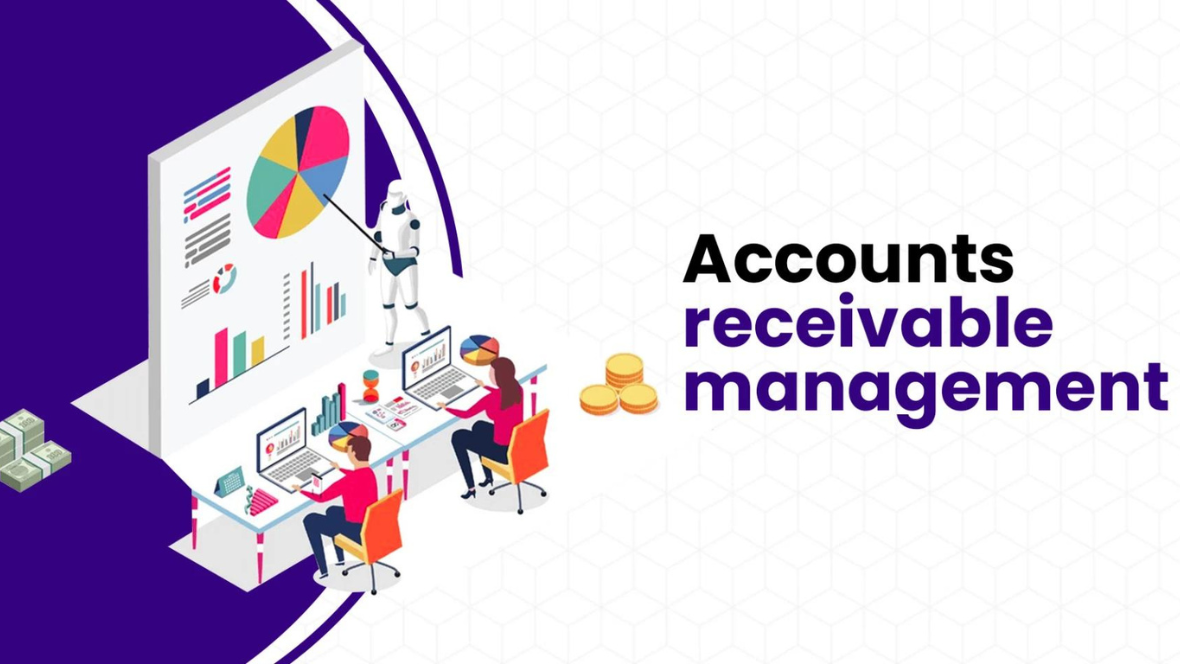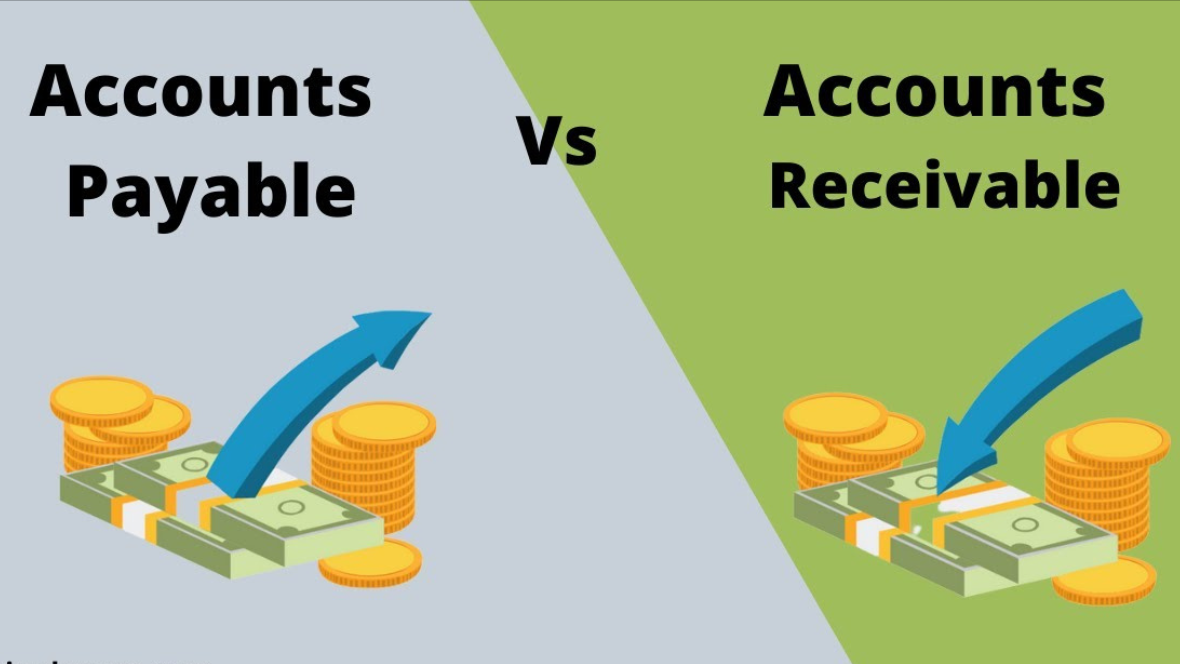How to Do Accounts Receivable Management?
Managing accounts receivable effectively is crucial for maintaining a healthy cash flow and ensuring the financial stability of any business. Accounts receivable refers to the outstanding payments owed to a company by its customers or clients for goods or services rendered. Proper management of accounts receivable involves several key steps to streamline the invoicing and collection process.
Firstly, it’s essential to establish clear and consistent credit policies to govern the terms of sale and payment expectations. This includes defining credit limits, payment terms, and penalties for late payments. By setting clear guidelines, businesses can minimize the risk of late or unpaid invoices and maintain control over their accounts receivable.
Furthermore, businesses should implement efficient invoicing practices to ensure prompt payment from customers. This involves issuing invoices promptly upon the completion of goods or services, including detailed information about the products or services provided, the payment due date, and accepted payment methods. Utilizing electronic invoicing systems can streamline this process and provide customers with convenient payment options, thereby expediting the collection of accounts receivable.
Additionally, proactive monitoring and follow-up are essential components of effective accounts receivable management. Businesses should regularly review their accounts receivable ageing reports to identify overdue invoices and promptly follow up with customers to secure payment. This may involve sending reminder notices, making phone calls, or implementing a collections strategy for delinquent accounts.
Moreover, businesses can leverage technology and automation tools to streamline the accounts receivable process further. This includes implementing accounting software systems that can automate invoicing, track payments, and generate aging reports, enabling businesses to efficiently manage their receivables.
Incorporating accounts payable into the management process is equally important. Accounts payable refers to the outstanding debts a company owes to its suppliers or vendors for goods or services received. Effective management of accounts payable involves timely processing of invoices, accurately recording expenses, and adhering to payment terms to avoid late fees or strained vendor relationships.
By integrating accounts payable management into overall financial operations, businesses can maintain balance and optimize cash flow management. This may include negotiating favourable payment terms with suppliers, taking advantage of early payment discounts, and prioritizing payments based on cash availability and strategic importance.
In conclusion, managing accounts receivable and accounts payable are essential aspects of effective financial management for any business. By implementing clear policies, efficient processes, and leveraging technology, businesses can optimize cash flow, minimize financial risks, and maintain strong relationships with both customers and suppliers.
How its work?
1. Establish Clear Credit Policies
- Define clear credit policies outlining the terms and conditions under which you extend credit to customers. This includes credit limits, payment terms (e.g., net 30 days), and consequences for late payments.
- Conduct thorough credit checks on new customers before extending credit to mitigate the risk of non-payment.
- Communicate credit policies clearly to customers to avoid misunderstandings or disputes later on.
2. Invoice Promptly and Accurately
- Generate and send invoices promptly upon delivering goods or services to customers.
- Ensure that invoices are accurate, detailing the products or services provided, quantities, prices, and any applicable taxes or discounts.
- Include clear payment terms on invoices, such as the due date and accepted payment methods, to facilitate timely payments.
3. Monitor Accounts Receivable Aging
- Regularly review your accounts receivable aging report to track outstanding invoices and identify overdue payments.
- Categorize outstanding invoices based on their age (e.g., current, 30 days past due, 60 days past due) to prioritize follow-up efforts.
- Implement aging thresholds to escalate collection efforts for aging invoices, such as sending reminder notices or initiating collection calls.
4. Implement Robust Collection Procedures
- Develop a systematic process for following up on overdue invoices, starting with friendly reminders and escalating to more assertive collection actions if necessary.
- Assign responsibilities for collections to specific staff members or departments to ensure accountability.
- Utilize automated reminders and collection tools, such as email templates or collections software, to streamline the process and improve efficiency.
5. Maintain Positive Customer Relationships
- Prioritize maintaining positive relationships with customers while pursuing collections to preserve long-term business partnerships.
- Communicate openly and transparently with customers regarding payment expectations, addressing any concerns or disputes promptly and professionally.
- Offer flexible payment options or negotiate payment plans with customers experiencing temporary financial difficulties to facilitate timely resolution.
"Ready to maximize your Return on Equity? Dive into the formula, explore real-life examples, and chart your path to greater profitability!"
What is accounts receivable?
Accounts receivable refers to the money owed to a business by its customers for goods or services that have been delivered or provided on credit. When a company sells its products or services on credit, it creates an account receivable, which represents the amount the customer owes to the business. Essentially, accounts receivable are short-term assets on the balance sheet that reflect the credit sales made by the company.
Once an invoice is issued to the customer, the amount becomes a part of the accounts receivable until it is paid. Managing accounts receivable effectively involves tracking outstanding invoices, following up on overdue payments, and ensuring timely collection to maintain cash flow and financial stability.

What is accounts receivable management?
Accounts receivable management involves overseeing the process of invoicing, tracking, and collecting payments owed to a business by its customers. This comprehensive practice includes establishing credit terms, evaluating customer creditworthiness, and implementing strategies to minimize overdue payments and bad debts. Accrual vs. deferral plays a pivotal role in this process, dictating when revenue is recognized based on when it’s earned (accrual) versus when it’s received (deferral), influencing financial reporting and cash flow management decisions. Effective management entails maintaining accurate records, analyzing receivables aging reports, and implementing proactive measures to optimize cash flow and reduce financial risks. By closely monitoring key performance indicators like days sales outstanding (DSO) and aging of receivables, businesses can identify trends, pinpoint areas for improvement, and enhance overall financial health. Ultimately, adept accounts receivable management is critical for sustaining liquidity, supporting growth initiatives, and ensuring long-term financial stability
Understanding the accounts receivable cycle
The accounts receivable cycle begins with the sale of goods or services on credit to customers. Once the sale is made, an invoice is generated detailing the transaction, including the products or services provided, quantities, prices, and payment terms.
Upon receiving the invoice, the customer acknowledges the debt and agrees to pay according to the specified terms. The invoice is recorded in the company’s accounts receivable ledger as an asset representing the amount owed by the customer.
As the payment due date approaches, the company monitors its accounts receivable aging report to track the status of outstanding invoices. If a customer fails to pay by the due date, the invoice becomes overdue, and the company initiates collection efforts to recover the outstanding debt.
Collection efforts may involve sending reminder notices, making collection calls, or escalating to more formal collection actions if necessary. Once payment is received from the customer, the accounts receivable balance is reduced accordingly, and the transaction is recorded as cash inflow.
Effective management of the accounts receivable cycle is crucial for maintaining cash flow, minimizing bad debts, and ensuring the financial stability of the business. By understanding the accounts receivable cycle, businesses can implement strategies to streamline credit sales, expedite collections, and optimize cash flow management.
What is the importance of accounts receivable aging?
Accounts receivable aging is a critical tool used by businesses to track and manage outstanding invoices owed by customers. It categorizes unpaid invoices based on their age, typically in time intervals such as current, 30 days past due, 60 days past due, and so on. This categorization allows businesses to assess the health of their accounts receivable and take appropriate actions to improve collections.
The importance of accounts receivable aging lies in its ability to provide insights into the payment behaviour of customers and the effectiveness of credit and collection policies. By regularly reviewing the aging report, businesses can identify overdue invoices that require attention, prioritize collection efforts, and allocate resources accordingly. Additionally, aging reports help businesses forecast cash flow more accurately, enabling better financial planning and decision-making.
QR code scanners are tools or applications that allow users to scan QR codes quickly and conveniently using their smartphones or other devices equipped with a camera. QR codes, or Quick Response codes, are two-dimensional barcodes that contain information encoded in a pattern of black squares arranged on a white background. They can store various types of data, such as website URLs, contact information, product details, or payment instructions.
The significance of QR code scanners lies in their versatility and ease of use. They provide a seamless way to access digital content or complete transactions by simply scanning a QR code with a mobile device. QR codes are increasingly used in marketing, advertising, retail, event management, and payment systems due to their ability to bridge the gap between physical and digital experiences. QR code scanners empower users to interact with QR code-enabled content or services quickly, enhancing convenience, efficiency, and engagement.
Calculating AR turnover
Calculating accounts receivable turnover is a financial metric used to assess how efficiently a company is managing its accounts receivable. It measures the number of times a company collects its average accounts receivable balance during a specific period, usually a year. The formula for calculating accounts receivable turnover is:
Accounts Receivable Turnover ={ (Net Credit Sales) / (Average Accounts Receivable)}
- Net Credit Sales: This refers to the total sales made on credit during the period under consideration, minus any returns or allowances. It represents the revenue generated by the company from credit sales.
- Average Accounts Receivable: This is the average amount of accounts receivable outstanding during the same period. It’s calculated by adding the beginning and ending accounts receivable balances for the period and dividing the sum by 2.
A higher accounts receivable turnover ratio indicates that a company is collecting its outstanding receivables more frequently, which is generally favourable as it suggests efficient management of credit and collections. Conversely, a lower ratio may indicate inefficiencies in collections or potential issues with credit policies.
Analyzing changes in accounts receivable turnover over time and comparing them to industry benchmarks can provide insights into the effectiveness of a company’s credit and collections policies and overall financial health.

What are the differences between accounts receivable and accounts payable?
Accounts receivable and accounts payable are two fundamental components of a company’s financial management:
1. Accounts Receivable
- Accounts receivable (AR) represent the money owed to a company by its customers for goods or services provided on credit.
- When a company sells products or services to a customer on credit, it creates an account receivable, which is recorded as an asset on the balance sheet.
- AR typically has payment terms associated with it, such as “net 30 days,” meaning the customer has 30 days to pay the invoice.
- Managing accounts receivable involves invoicing customers, tracking payments, following up on overdue invoices, and ultimately collecting payments to convert receivables into cash
2. Accounts Payable
- Accounts payable (AP) refer to the money owed by a company to its suppliers or vendors for goods or services received on credit.
- When a company purchases goods or services on credit, it incurs an accounts payable liability, which is recorded on the balance sheet.
- AP also has payment terms associated with them, dictating when payments are due to suppliers.
- Managing accounts payable involves processing invoices received from suppliers, verifying the accuracy of charges, scheduling payments within the agreed-upon terms, and maintaining positive relationships with suppliers.
In summary, accounts receivable represent money owed to a company by its customers, while accounts payable represent money owed by a company to its suppliers. Both are crucial components of managing cash flow and maintaining healthy relationships with customers and suppliers.
What are some strategies for encouraging timely payments?
Certainly! Encouraging timely payments is essential for maintaining a healthy cash flow and reducing the risk of bad debt. Here are some brief strategies to achieve this:
Offer Incentives
Provide discounts or incentives for early payments, such as a small percentage off the total invoice amount for payments made within a specified period, like “2% discount for payments made within 10 days”.
Set Clear Expectations
communicate payment terms upfront, including due dates and consequences for late payments. Make sure this information is prominently displayed on invoices and in contracts.
Streamline Payment Processes
Make it as easy as possible for customers to pay by offering multiple payment options, such as online payments, credit card payments, or automated bank transfers. Simplify the payment process to reduce friction and encourage prompt payments.
Send Reminder Notices
Implement a systematic approach to sending reminder notices for upcoming and overdue payments. These reminders can be in the form of emails, letters, or phone calls, depending on the preferences of your customers.
Establish Personal Relationships
Cultivate strong relationships with your customers to foster a sense of trust and accountability. Personalized communication can often encourage customers to prioritize their invoices for timely payment.
"Unlock your ROE potential today! Learn the formula, see examples, and guide your way to financial success."
How can AR software be utilized to streamline processes?
Utilizing accounts receivable (AR) software can significantly streamline processes related to managing and collecting payments from customers. This software typically offers a range of features designed to automate tasks, improve efficiency, and enhance visibility into the accounts receivable process. Here’s a brief description of how AR software can streamline processes:
1.Automated Invoicing
AR software allows businesses to generate and send invoices automatically based on predefined criteria, such as delivery of goods or completion of services. This eliminates the need for manual invoice creation and ensures that invoices are sent promptly and accurately.
2. Electronic Payments
Many AR software solutions support electronic payment options, allowing customers to pay invoices online via credit card, ACH transfer, or other electronic payment methods. This accelerates the payment process and reduces the time and effort required to reconcile payments manually.
3. Accounts Receivable Aging Reports
AR software provides real-time visibility into the status of outstanding invoices through customizable accounts receivable aging reports. Businesses can easily track overdue payments, identify trends, and prioritize collection efforts based on the age of outstanding invoices.
4. Automated Reminders and Notifications
AR software can automate the process of sending payment reminders and notifications to customers as invoices become due or overdue. These reminders can be customized and scheduled to ensure timely follow-up without manual intervention.
5. Integration with Accounting Systems
Many AR software solutions integrate seamlessly with accounting systems such as QuickBooks, Xero, or Sage, allowing for seamless data synchronization and eliminating the need for manual data entry. This streamlines the reconciliation process and ensures that financial records are accurate and up to date.
6. Collections Management
AR software often includes features for managing collections, such as tracking collection activities, assigning tasks to team members, and generating collection letters or statements. This helps businesses streamline the collections process and improve efficiency in recovering overdue payments.
What is the importance of cash flow management?
Cash flow management is the process of tracking, analyzing, and optimizing the flow of cash in and out of a business. It is crucial for the financial health and sustainability of any organization. Here’s a brief description of its importance:
Ensures Liquidity
It ensures that a business has enough cash on hand to meet its short-term obligations such as payroll, rent, utilities, and supplier payments. Without proper cash flow management, a business may struggle to cover these essential expenses, leading to financial instability.
Supports Growth
Adequate cash flow allows businesses to invest in growth opportunities, such as expanding operations, launching new products or services, or entering new markets. Effective cash flow management ensures that funds are available to fuel these growth initiatives without relying solely on external financing.
Helps Manage Debt
Proper cash flow management enables businesses to service their debt obligations, including loan repayments and interest payments. By maintaining healthy cash flow, businesses can avoid defaulting on loans, maintain a good credit rating, and access financing at favourable terms when needed.
Facilitates Decision Making
Accurate cash flow forecasting provides valuable insights into a business’s financial health and future cash needs. It helps business owners and managers make informed decisions regarding budgeting, investment, and operational strategies. By anticipating cash shortages or surpluses, businesses can proactively adjust their plans to mitigate risks or capitalize on opportunities.
Enhances Stakeholder Confidence
Investors, lenders, suppliers, and other stakeholders closely monitor a company’s cash flow position as an indicator of its financial stability and management efficiency. Effective cash flow management instils confidence in stakeholders, demonstrating that the business is well-managed, financially sound, and capable of meeting its obligations.
Conclusion
In conclusion, effective management of accounts receivable (AR) is paramount for ensuring the financial stability and growth of businesses. By implementing clear credit policies, invoicing promptly, monitoring receivables aging, and employing robust collection procedures, companies can optimize cash flow, minimize bad debt exposure, and nurture positive customer relationships. Additionally, integrating technologies such as receipt scanners can streamline AR processes by automating data entry, improving accuracy, and reducing administrative burdens. By leveraging both strategic practices and innovative tools, businesses can navigate the complexities of AR management with greater efficiency and resilience, ultimately driving sustainable success in today’s dynamic business landscape.
FAQs
What are accounts receivable aging reports, and why are they important?
Accounts receivable aging reports categorize outstanding invoices based on their age, typically in time buckets such as current, 30 days past due, 60 days past due, etc. These reports are essential for tracking the status of receivables, identifying overdue payments, and prioritizing collection efforts. They provide insights into the financial health of a business and help in forecasting cash flow.
How can businesses encourage timely payments from customers?
Businesses can encourage timely payments by establishing clear credit policies with defined payment terms and consequences for late payments. Offering incentives for early payments, such as discounts or extended credit terms, can motivate customers to pay promptly. Additionally, sending timely and polite payment reminders and implementing automated invoicing systems can facilitate prompt payments.
What should businesses do when faced with overdue accounts receivable?
When faced with overdue accounts receivable, businesses should initiate a systematic collection process. This may involve sending reminder notices, making collection calls, or engaging with a collections agency for more assertive actions. It’s crucial to communicate openly with customers to understand any issues causing delays and work towards mutually agreeable solutions while also enforcing credit policies firmly.
How can businesses minimize the risk of bad debts?
To minimize the risk of bad debts, businesses should conduct thorough credit checks on new customers before extending credit. Establishing credit limits based on customers’ creditworthiness and monitoring their payment history can help mitigate risks. Additionally, diversifying the customer base, offering payment terms selectively, and requiring deposits or advance payments for high-risk transactions can reduce the likelihood of bad debts.
What role does technology play in accounts receivable management?
Technology plays a significant role in streamlining accounts receivable management processes. Businesses can leverage accounting software to automate invoicing, track receivables, and generate aging reports efficiently. Additionally, collections software and customer relationship management (CRM) systems can help in managing collections, tracking customer interactions, and improving communication with customers. Integrating these tools can enhance efficiency, accuracy, and transparency in accounts receivable management practices.
Contact Us
Let's Talk About Your Project
















